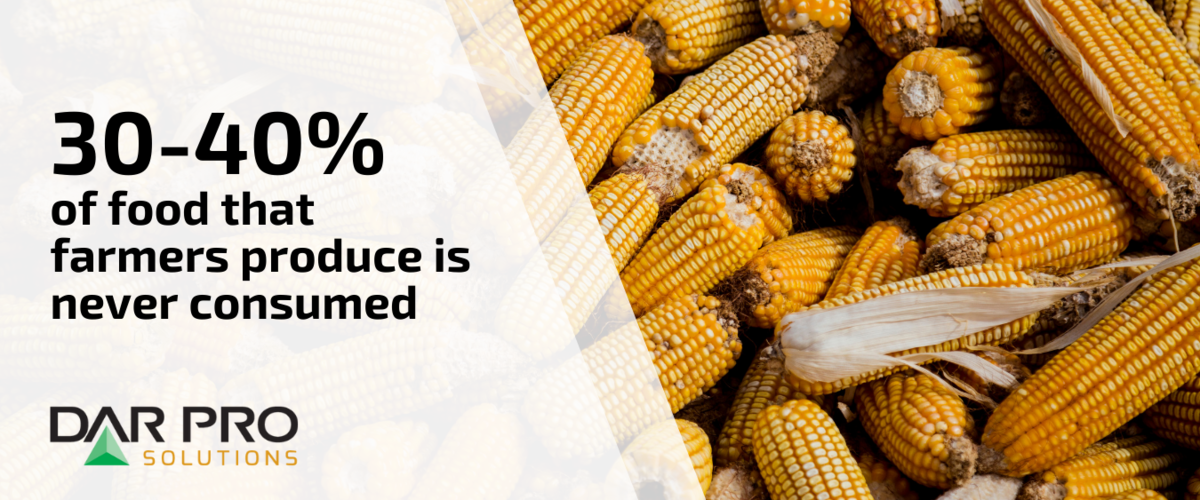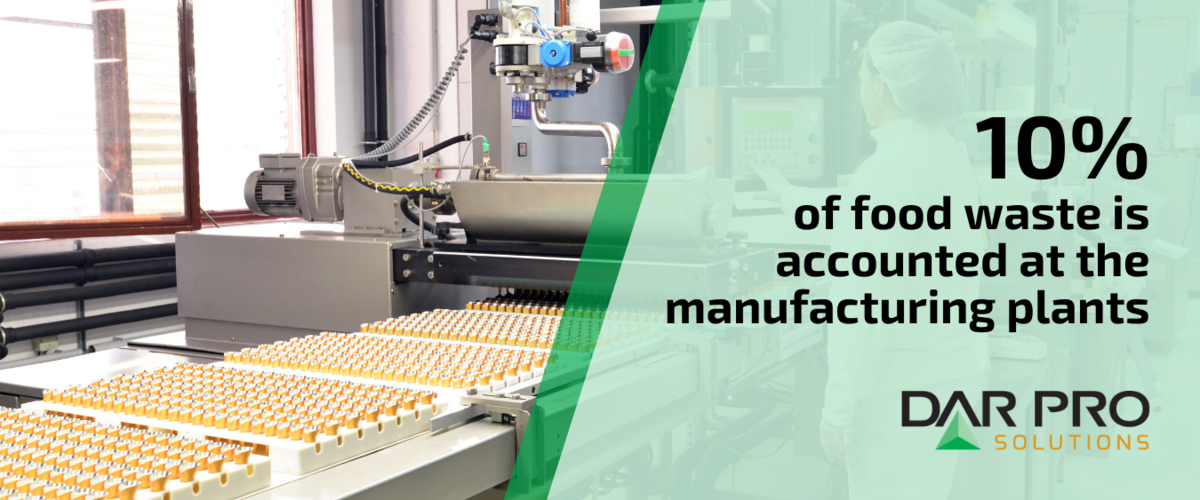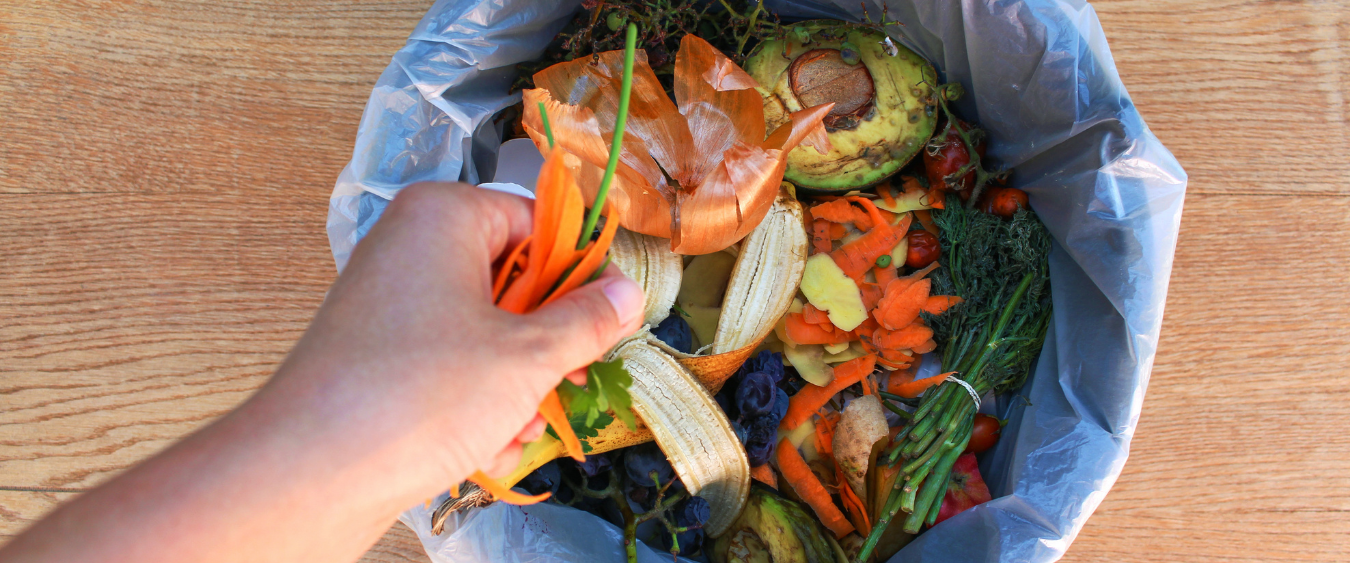A look at our waste output by the numbers
As a country, we produce 40 million tons (that is 80 billion pounds) every year. That’s estimated to be 30-40 percent of the country’s entire food supply.
- The restaurant industry spends an estimated $162 billion every year in costs related to wasted food.
- The average American household spends more than $3,000 a year on eating out.
- More than 90 percent of food scraps in the United States go to landfill.

Food Waste isn’t a single-tiered issue.
In order to combat the food waste problem in the United States, we must understand the source of the issue – and it comes from a variety of ways. Food waste output isn’t just an issue of a household throwing away perfectly good food or a restaurant throwing away all of its leftover ingredients. The rising amount of waste we produce comes from every step of the supply chain. The restaurant and consumer level is just one small part of the equation. Here’s a glimpse at where and how food is wasted at each step of the supply chain.
FROM FARM TO TABLE
The farm:
Roughly 30-40 percent of food that farmers produce is never consumed. If there isn’t as much demand for a particular crop each year, the excess crops are likely to end up in a landfill even though it is better for the environment if they are replanted, if possible. According to one study, 15 percent of all food grown on farms across the country never leaves the farm due to workforce shortages, lack of demand, imperfections in how the crop is grown and weather events. That accounts for 15 million tons of produce and comprises the aforementioned 30 percent in total food waste output.
The problems in losing food between harvest and distribution need to be solved in order to combat the food waste issue in America. Stopping the problem at its source and ensuring we farm more efficiently will go a long way in tackling the challenge.

The manufacturer:
Manufacturing plants account for more than 10 percent of food waste. This is due to human error, lack of standard operating procedures and poor training. There’s a thin margin for error when it comes to processing foods in large scale manufacturing plants. One brief power outage or equipment malfunction can render an entire day’s worth of product unfit to be processed and sold. The inedible meat byproduct, as well as the fats and oils that are produced during processing are sometimes disposed of when they can be recycled.

The grocery store
Thirty percent of food in American grocery stores is thrown away. That is a staggering number, caused by a variety of factors like inefficient inventory ordering, products with shorter shelf lives, higher prices for the products at the retail level and more. Grocery stores are one of the root causes of food waste in America as they produce 16 billion pounds of food waste annually.
Better packaging, inventory management and improved recycling procedures are a few of the many areas that must be improved to shrink the food waste output from grocery stores across the country.

Restaurant level:
As we covered earlier, the restaurant level isn’t the only source of the problem when it comes to producing food waste, but restaurants are certainly major waste producers. One report states that a half of a pound of food is wasted per meal in restaurants. The causes for food waste within restaurants are similar to those at in the manufacturing and retail grocery store industry.
Aside from leftovers not going to better causes like food banks, inefficient inventory management leads to ingredients never being used and unnecessary packaging and items with shorter shelf lives magnify the issue as well. Food that is sent back cannot be utilized in any way. Imagine the amount of incorrect orders in restaurants every day. All of that goes to waste and is one of the many causes of food waste in restaurants.
The table:
The average household of four in America wastes about $6,100 worth of food per year. In total, that equates to about 27 million tons of food waste annually. That’s close to $144 billion spent on food that isn’t used. Some of it is as simple as a poor understanding of expiration dates, taking the wrong approach when it comes to shopping in the grocery store or failing to adequately manage portion sizes per meal.

Fixing this facet of the problem falls on us as consumers. Being smarter about how we buy, what we buy and how we cook it can make a significant impact in solving the food waste problem. The household level is an opportunity to be the most proactive because there are the fewest limits on how and where you can recycle your food. Whether it’s donating to a food bank or reevaluating how you stock your pantry, there is much work to be done to reduce food waste in households across America.
The United States is the leading producer of food waste in the world, and it comes from a variety of sources at every step of the supply chain. This issue will only grow in the years to come unless measures are taken to reduce our total food waste output.
DAR PRO Solutions is an industry leader in the recycling of used cooking oil and inedible meat byproduct. Our service helps make the world a greener and more sustainable place to live while helping reduce the food waste problem in America and across the world. Call us 24/7/365 at 855-DAR-PRO1 (855-327-7761).
Contact Sales
For customer service inquiries call our toll free number (855) 327-7761
By submitting this form I agree to the privacy policy including the usage of contact details to contact me for marketing purposes.
